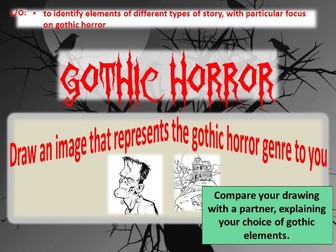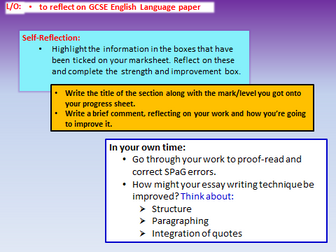New English Language GCSE (Edexcel 9-1) Resources for 19th Century Fiction Extracts
A full set of powerpoint lessons based on the Edexcel New English Language GCSE Fiction and Imaginative Writing paper. Also included: handouts of the extracts (three chosen from the Edexcel Text Anthology) and mark schemes for the 6 marker, 15 marker and writing section. The lessons are based around extracts from Jane Eyre, The Invisible Man, and Pride and Prejudice, and I've found each powerpoint takes three to four 50 minute lessons.<br />
<br />
A brief explanation of some of the elements:<br />
> The three powerpoints follow a similar format beginning with a starter activity to interest the students in the book and/or author overall - links for the videos are at the bottom of the slides. The questions for the extracts are then broken down into the format and marks awarded for each in the exam.<br />
<br />
> Jane Eyre:<br />
~ this is the first extract I use. The powerpoint includes a refresher slide at the beginning to remind the students of which part of the exam these lessons relate to. The complete powerpoint explaining the structure of the new GCSEs overall is available for free here:<br />
<br />
https://www.tes.com/teaching-resource/new-english-gcse-edexcel-9-1-explanation-for-introductory-lesson-11298089<br />
<br />
~ this powerpoint also includes exercises to familiarise the students with the mark scheme requirements for the 6 mark and 15 mark questions. I've also uploaded handouts of each that can be distributed to go with these parts of the lesson.<br />
<br />
> The Invisible Man:<br />
~ the starter activity: the lack of a video for The Invisible Man is intentional as I've used it at the end of the reading activities so that the students can reflect on the interpretation of the extract.<br />
<br />
> Pride and Prejudice:<br />
~ the video on slide 4 needs to be started at 1:05 so that it begins at the start of the extract.<br />
<br />
> I've also included the full mark schemes for Section A (Reading) and Section B (Writing) which are taken from the exam board but adapted into a tick box format which I've found the students find easier to understand when looking at the paper overall. I've also uploaded the self-reflection slide I use for the feedback to the complete paper - I've found that this takes a whole lesson.<br />
<br />
Please do leave any questions in the comments section if you need any further clarification, and if you feel the resources have been useful, please feel free to post a rating and feedback. Thank you!<br />
<br />
Image acknowledgements are available to view in the final document of the resource pack. Every effort has been made to trace copyright holders and obtain permission for the use of images in this teaching resource. Where this has not been possible, or if any copyright holders have been inadvertently overlooked, please do contact me and I will be pleased to make any necessary changes.










